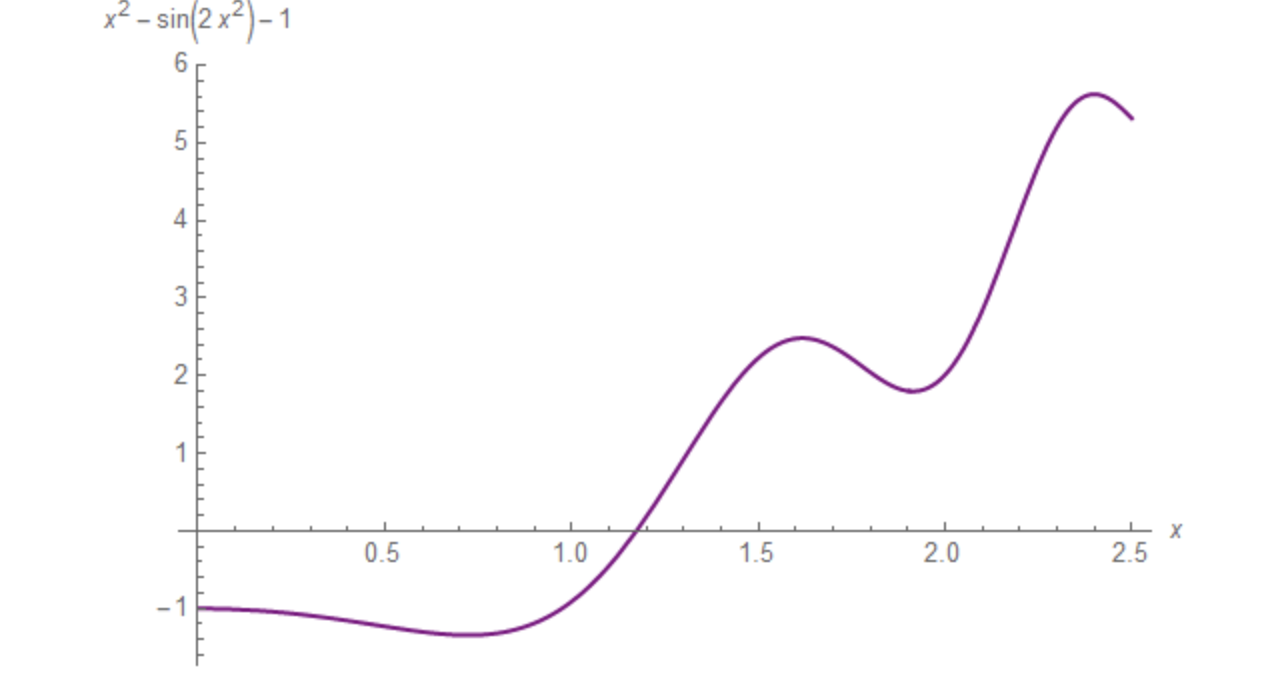Question
Design and construct a computer program in one of the following languages (e.g., C, C++, C#, Java, Pascal, or Python) that will illustrate the effects
Design and construct a computer program in one of the following languages (e.g., C, C++, C#, Java, Pascal, or Python) that will illustrate the effects of rounding errors and truncation errors. Be sure to follow the documentation and programming style policies of the Computer Science Department. Also, note that the arguments of all trigonometric functions in this course are measured in radians.
The following is a plot of the function f(x) = x2 - sin(2 x2) - 1 :

In order to illustrate the effects of the two major error sources, rounding and truncation, attempt to determine an approximation to the derivative of f(x) at x = 2.0 radians using the difference approximation given below. (The true answer is 4 - 8 cos(8) or about 5.1640002704689082070).
Use the formula:
f'(x) (f(x+h) - f(x)) / h
with h=1, 0.5, 0.25, ... 1.8189894035459e-12
(i.e., keep halving h 39 times or until it is less than 2.0e-12.)
Neatly print out the values of i, h, your approximation to f'(x), and the error in the approximation for each value of h used. The value of i is just the loop index and you may omit it, if you like. This error will include the effects of both truncation and rounding. An example of how your output might be organized:
i h approx error 0 1.000000e+000 x.xxxxxxe+000 -y.yyyyyye+000 1 5.000000e-001 -x.xxxxxxe+000 y.yyyyyye-001 ... ...
Write down (in your output file or in another file submitted with your program) any conclusions that you can make from these experiments.
x? - sin(2x) - 1 6 5 4 4 3 2 1 0.5 1.0 1.5 2.0 LX 2.5 -1Step by Step Solution
There are 3 Steps involved in it
Step: 1

Get Instant Access to Expert-Tailored Solutions
See step-by-step solutions with expert insights and AI powered tools for academic success
Step: 2

Step: 3

Ace Your Homework with AI
Get the answers you need in no time with our AI-driven, step-by-step assistance
Get Started


